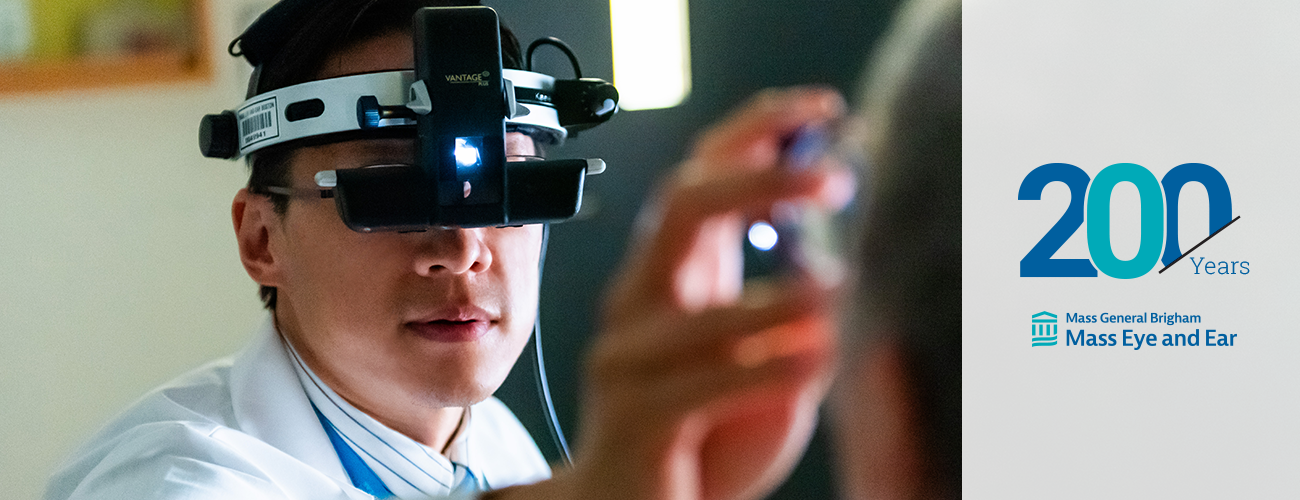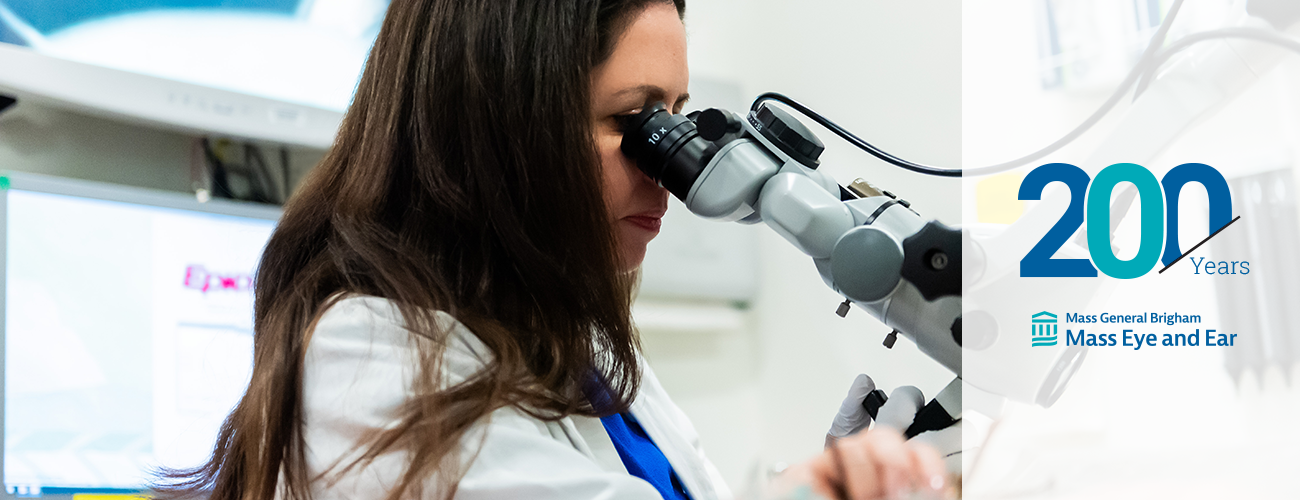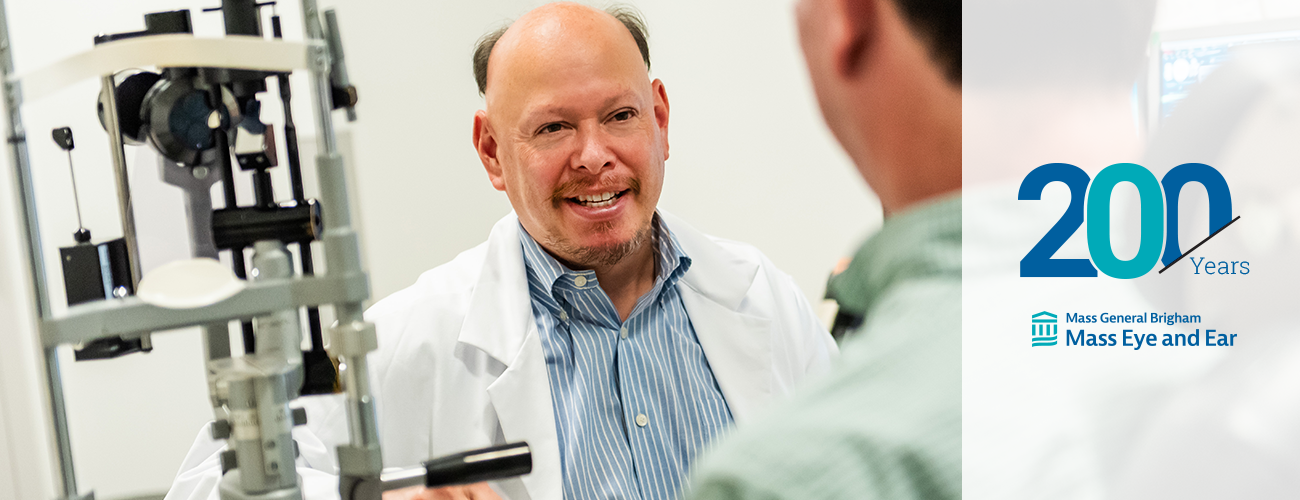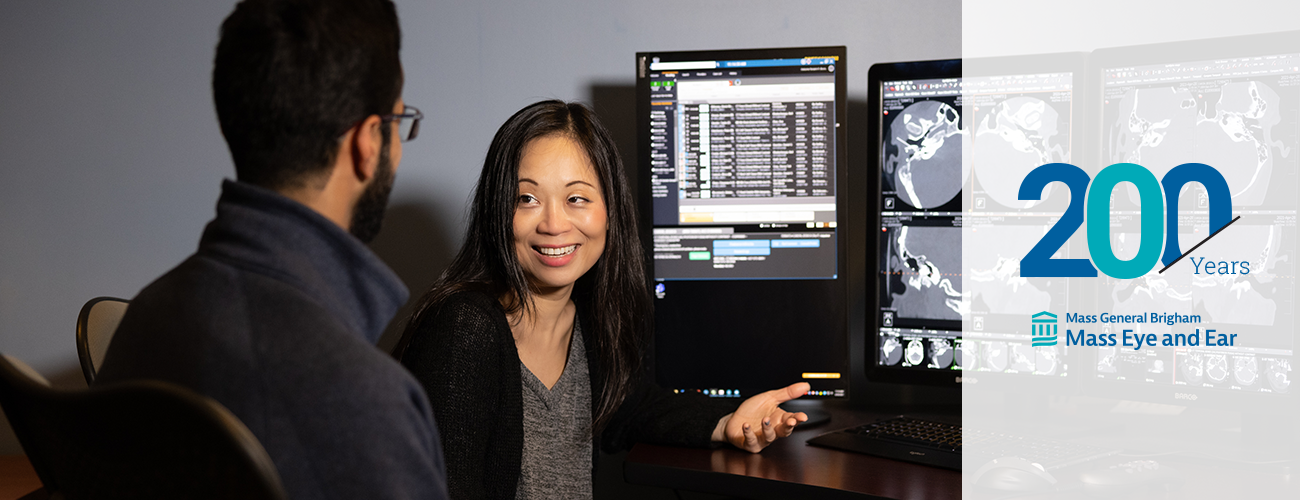Mass Eye and Ear
Celebrating 200 Years
Honoring the past. Inventing the future.
In 2024, we celebrated our 200th year of serving patients locally and throughout the world. We can't help but stand in awe of where we've been, and all what our predecessors have accomplished. But our legacy is one that we'll never rest on. Instead, we're constantly in motion, working towards a future where we:
- Continue to harness bold science and visionary minds to find life-changing and life-saving cures never before imagined
- Heighten our commitment to training the next generation of trailblazing researchers and physicians—and the next after that
- Never stop serving our community, remembering that before we were the world's preeminent resource for treating blindness, deafness and diseases of the head and neck, we started as a one-room clinic to treat those in the Boston community who needed eye care
Today, we are a vital part of the Mass General Brigham integrated health care system, determined to build on our significant history. So, as we celebrate this milestone, we do so with a promise that this is only the beginning. Our mission remains clear: more cures found, more transformations enacted, more lives improved, and more hope fulfilled.
Mass Eye and Ear History Milestones
Learn more about Mass Eye and Ear's first 100 years.
1824
Edward Reynolds, MD, and John Jeffries II, MD, found the Boston Eye Infirmary in a rented room in Boston's Scollay Square. In the first 15 months, 859 patients seek treatment—777 for conditions of the eye and 82 for conditions of the ear.
1827
Massachusetts Charitable Eye and Ear Infirmary is incorporated.
1831
Dr. John Jeffries II announces twice-weekly lectures on "Diseases of the Eye" for medical students. The pathology of the eye is explained using case reports of patients seen at Mass Eye and Ear.
1833
Henry Artemus Ward, MD, is appointed assistant surgeon for diseases of the ear, the first surgical position at the hospital dedicated to caring solely for ear patients.
1837
Mass Eye and Ear moves to the Gore Mansion on Green Street in Boston's Bowdoin Square, enabling the hospital to admit patients overnight. On July 19, Richard Blood becomes the first person admitted to the hospital as an in-patient (for the treatment of a condition of the cornea).
Edward Jones Davenport, MD, publishes the first two aural articles to come out of Mass Eye and Ear, "Polypi in the Meatus Auditorium Externus" and "Congenital Deafness Incurable," both in the Boston Medical and Surgical Journal (today known as The New England Journal of Medicine).
1847
Ether is used for the first time at Mass Eye and Ear (for the removal of a pterygium of the eye).
1850
Mass Eye and Ear moves to a new building at 175 Charles St. in Boston. This was the first hospital built specifically for Mass Eye and Ear.
1864
The American Ophthalmological Society is established. Founding members include Mass Eye and Ear ophthalmologists Hasket Derby, MD; John Homer Dix, MD; Benjamin Joy Jeffries, AM, MD; and Francis Sprague, MD.
1871
The Harvard Medical School Department of Ophthalmology is formally established.
1876
Henry Withington Bradford, MD, is appointed as the first aural externe (approximately equivalent to a resident or fellow today).
The hospital's first library is established, with Frederick Cheney, MD, as its librarian.
1879
The Board of Managers opens a clinic for teaching otology to Harvard Medical School (HMS) students in a converted patient waiting room.
1885
Dr. Henry Withington Bradford implants a globe from a rabbit into the eye socket of a Boston merchant marine. It is the first-ever eye transplant of any kind in a human patient. An account is later published in the Boston Medical and Surgical Journal.
1886
Dr. Henry Withington Bradford performs a successful operation on Anne Sullivan, who had been partially blind since childhood. Sullivan goes on to become the lifelong teacher, friend and companion of Helen Keller.
1888
Clarence Blake, MD, is appointed as the first professor and chairman of the HMS Department of Otology. John Orne Green, MD, is named professor of clinical otology at HMS.
1891
Separate eye and ear training programs are established.
Dr. Benjamin Joy Jeffries establishes one of the first ophthalmic pathology laboratories in the United States.
1892
Frederick Jack, MD, then an assistant surgeon, conducts the first stapedectomy (a procedure to remove a small bone from the inner ear) in the United States. He performs the procedure under Dr. Clarence Blake.
1895
Mass Eye and Ear opens a postgraduate training school for ophthalmic and aural (hearing) nurses.
1899
Mass Eye and Ear moves to its current location at 243 Charles St. (at the corner of Charles and Fruit streets) in Boston and hosts 25,877 patient visits in its first year.
The Gardner Building for Contagious Eye Diseases is opened. This was the first isolation ward in the country for the treatment of contagious diseases of the eye.
1900
HMS's otolaryngologic instruction finds a home at Mass Eye and Ear, where it remains today.
1903
The Mosher Course (also called the "Friday Night Course") in head and neck anatomy begins, taught by Harris Peyton Mosher, MD. The class runs until 1939, excluding a hiatus that Dr. Mosher takes while serving in the Army during World War I.
1907
Catherine Brannick becomes Mass Eye and Ear's first social service worker and leads the department for its formative first four years.
1909
The Nurses' Home is opened to house Mass Eye and Ear nurses and domestic workers. Nurses are required to reside there, including taking all meals at the home and observing strict curfews and rules of conduct.
1912
Mass Eye and Ear opens its first X-ray facilities. (Previously, Mass Eye and Ear's patients were sent to Massachusetts General Hospital for imaging.) William Liebman, MD, serves as Mass Eye and Ear's first roentgenologist (now known as a radiologist).
1915
The Ladies Visiting Committee is formed, with Mrs. Robert Russell Shaw as its first chairwoman. The committee, formed mainly of the wives of Mass Eye and Earphysicians, continues into the 1990s, engaging in a wide range of volunteer and fundraising activities. Early on, one of its greatest contributions was paying the salary of a social worker for the hospital.
1921
Dr. Harris Peyton Mosher becomes chief of laryngology. He would go on to direct the new Laryngological Service at both Mass Eye and Ear and Mass General one year later.
Ophthalmologist Maud Carvill, MD, becomes the first woman physician hired to Mass Eye and Ear's staff.
1922
Isabel Kerr, MD, becomes the first woman surgeon appointed to what today is known as the Otolaryngology Department.
1923
Varaztad Kazanjian, DMD, MD, becomes the first chief of the Plastic Surgery Service and HMS's first professor of plastic surgery. He enjoys a long and accomplished career and is considered a father of modern plastic surgery.
1924
The American Board of Otolaryngology is founded, with Dr. Harris Peyton Mosher as its first president.
The hospital changes its name to Massachusetts Eye and Ear Infirmary.
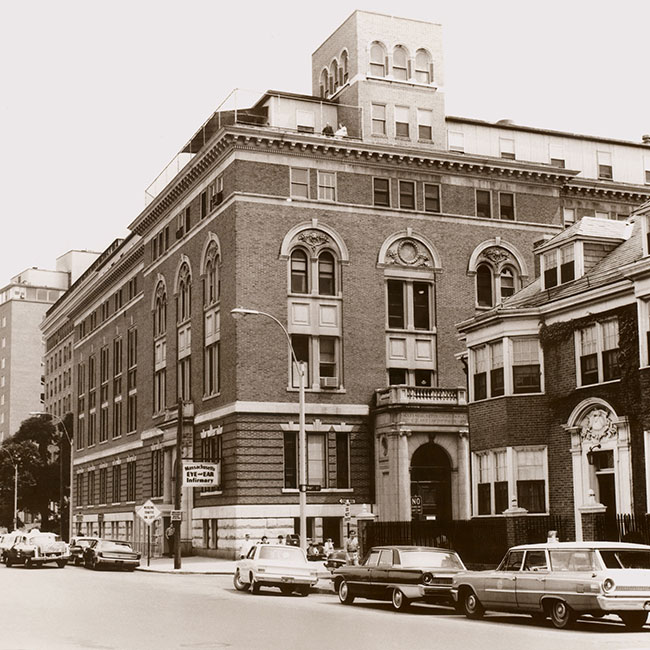
Historical Images
View a selection of photos from the Mass Eye and Ear archives, highlighting 200 years of research, innovation and patient care.
See gallery
